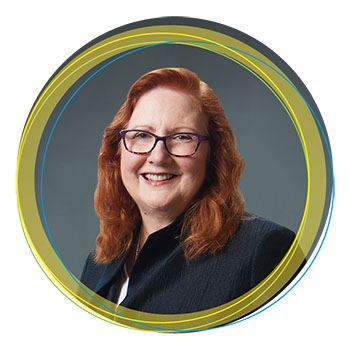To change the world, tell a story. Make sure you tell it well.
That’s the philosophy at the heart of Rev. Jana Childers’ preaching and the lessons she passes along to her students. Childers, dean of the Graduate School of Theology, views preaching as an art. As with any art form, its power lies in transcending facts and logic to reach its audience at a deeper level.
“You want to get to the unconscious part of the mind, where people hold the values they live out,” she says. “People don’t live out of propositional truths. They live out of images, and they hold those images in the back of their mind, in what we might call the unconscious part of the mind. So if we want to persuade somebody of something, if you want to touch them at a place where it could really change the way they live, then you want to get at those images.”

Last year, San Francisco Theological Seminary (SFTS) merged with the University of Redlands, creating the Graduate School of Theology. Part of what makes the two formerly separate institutions a good fit is U of R’s focus on service, says Childers, mentioning with obvious pride that the Peace Corps ranks Redlands among the top volunteer-producing small colleges and universities.
While only about half the students in her Master of Divinity classes aspire to speak from the pulpit, others are planning careers in which they can bring about positive change in other ways. Whether fundraising for a nonprofit or teaching in the classroom, these students can use some of the same skills to shape attitudes and spur action.
Those skills involve mastering the tools of storytelling—including image, metaphor, and a dramatic structure that dates to Aristotle (conflict, complication, crisis, and resolution). If those tools sound as suited to a stage play as a sermon, that’s on purpose. Childers literally wrote the book connecting the two art forms.
In 1998, Childers published Performing the Word: Preaching as Theatre. The title elicited disapproval from critics who thought it implied something ego-driven and inauthentic. The criticism continues. “Performance is a 99 percent negative word in most church circles,” says Childers, whose courses include Preaching as Theatre, as well as Performance Studies and Preaching.
While the vocabulary of the stage may be controversial, the shift toward narrative-based sermons dates to the late 20th century, when a movement known as New Homiletics promoted a more imaginative, open-ended approach. This shift corresponded with the rise of women in preaching, something Childers calls
“a holy coincidence.”
Female preachers tend “to be more in touch with the human, the relational, and the personal, and more likely to speak in terms of images and stories than the men of our generation,” says Childers. She adds, “Who would have thought at the time that narrative theology was rising, that women would enter the field, and that the combustion between those two would really change preaching?”
Childers likens writing a sermon to penning a script. She encourages students to think of themselves as creative writers and to draw inspiration from great works of art. Sometimes she requires students to carry a “quote notebook” to record words and images that may spark an idea.
Although she embraces the word “performance,” Childers says the goal goes beyond putting on a good show.
“Preaching is not just for the beauty of it, the ecstatic spiritual experience, and the quieter spiritual experience,” she says. “All those are great and important, but, beyond that, preaching is to motivate people to do some good in the world.”
Learn more about the U of R Graduate School of Theology.






